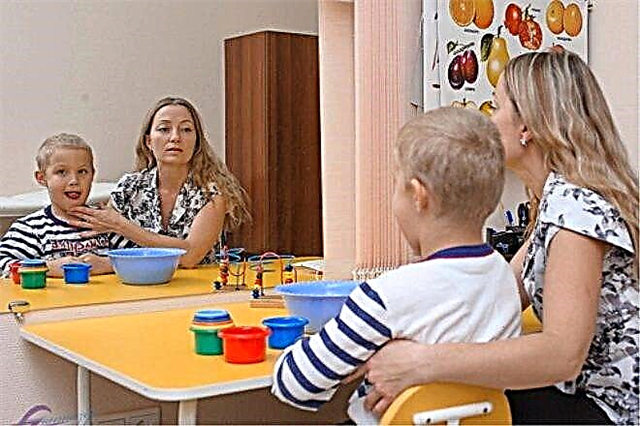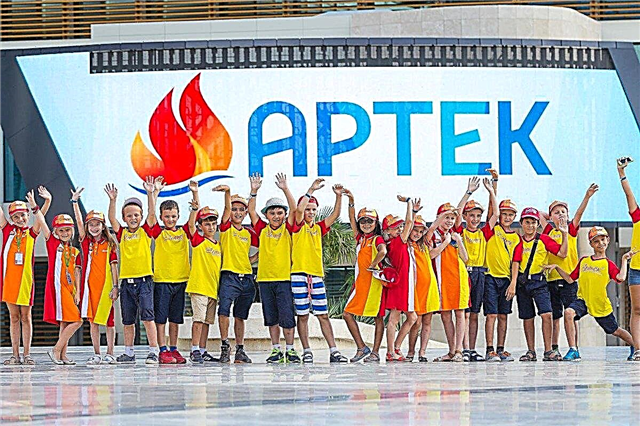
Childhood speech impairments can vary. They manifest themselves in different ways, are caused by different reasons and can have different consequences. One of the most severe speech disorders is children's dysarthria.

What it is?
The name of the pathology comes from two Greek words, which literally mean the following in a phrase: "difficulty in connecting." Dysarthria occurs when the nervous functions of the speech apparatus are impaired and are connected through impulses with the cerebral cortex. The innervation turns out to be disrupted due to the unstable work of the nervous system. The ability to mobility of speech organs is limited. The baby's tongue, soft palate, lips become weakly mobile, the articulation process is disrupted.
The muscle tissue of the speech apparatus cannot adequately contract, which becomes a prerequisite for a violation of the pronunciation of both individual sounds and whole words. Speech breathing is impaired, speech becomes illegible, and if the damage to the nervous system is severe, then a complete lack of speech may develop - anarthria.
Dysarthria, according to statistics, affects up to 6% of children, but over the past 5 years there has been a rapid increase in the prevalence of pathology. The problem is studied not only by speech therapists, but also by neurologists, child psychiatrists.

Why does it arise?
The innervation of the speech motor nerves usually occurs due to more serious "failures" in the work of the central nervous system. In 70-80% of cases, this speech disorder accompanies such a pathology as cerebral palsy. Cerebral palsy and impaired ability to pronounce sounds of speech clearly have common causes, common origins and prerequisites. The work of the central nervous system is disrupted even in utero, either during childbirth, or in the first hours-days after birth. Brain lesions are usually organic, associated with birth trauma, fetal hypoxia.
Experts see a close connection between the nature of the pregnancy in the mother and the possible development of dysarthria in the child. So, in women who suffered from severe toxicosis while waiting for the baby, those who had fetal hypoxia, Rh-conflict between mother and child, the probability of speech disorders in the child is higher. Organic brain damage can also be caused by acute hypoxia during childbirth, and the development of severe nuclear jaundice after birth, and premature birth - in premature babies, depending on the period at which they appeared, CNS lesions are common.


The earlier the birth took place, the higher the likelihood of such consequences. The more severely the child's motor abilities are impaired, the more pronounced is the dysarthria.
All of the above does not mean that pathology is not capable of developing in boys and girls who were born healthy and not burdened with diagnoses such as cerebral palsy. And at the age of 2 years, and at 4 years, and at 5 years and at any other age, children may experience innervation of the speech apparatus as a complication after suffering severe encephalitis, meningitis, purulent otitis media of the middle ear. Pathology often develops with hydrocephalus, after the child receives a cranial injury, and also as a consequence of brain damage after severe poisoning.
A brain tumor, oligophrenia, and operations performed on the brain can cause disruption of the functioning of the speech motor nerves. But most often, pathology is not an independent disease and only acts as a symptom of a certain disease.

Types and degrees
Since dysarthria disrupted the work of certain nerve endings that coordinate the activity of speech muscles with the brain, then, depending on the location of the innervation focus, several types of pathology are distinguished:
- bulbar form - occurs when the nuclei of the cranial nerves are destroyed, the structure of the nerves of the glossopharyngeal nerve, hypoglossal, vagus nerve, and sometimes the trigeminal nerve is disrupted;
- false bulbar form (pseudobulbar) - the nerve nuclei are intact, but the pathways between the cortical layer and the nuclear are affected;
- subcortical form - it is also called extrapyramidal, with such a pathology, speech is impaired due to damage to the subcortical nuclei;
- cerebellar form - the name speaks for itself: the lesion is concentrated in the cerebellum;
- crustal form - speech impairment occurs against the background of several foci of lesions of the cerebral cortex.

In violation, a certain syndrome is always traced: either the muscles are overly tense or pathologically relaxed, therefore, experts distinguish spastic, rigid, hyperkinetic, atactic variants of pathology.
In speech therapy, there are degrees of severity of such a speech disorder.
- First degree (she's light, she's erased dysarthria). Outwardly, it practically does not appear, and only a specialist can pay attention to problems in speech articulatory motor skills in children and only during a special examination.
- Second degree. The speech is quite understandable, and children do not have serious problems with communication, but others around them notice some deviations, violations of sound pronunciation.
- Third degree. What exactly the child says can only be understood by his relatives and friends, who spend a lot of time with him and know what exactly the child means. Sometimes a part of speech is understandable and completely alien to people.
- Fourth degree (aka severe)... Lack of speech at all or its complete illegibility, in which even relatives find it difficult to explain what the child said and what he meant.

Symptoms and manifestations
A child with dysarthria speaks, but those around him have the impression that he has “put some porridge in his mouth”. His words are illegible, his pronunciation is indistinct, incomprehensible. Violation of the state of the muscular component of the speech apparatus does not provide clarity and intelligibility in pronunciation. In this case, the child also shows additional signs of a violation of the state of speech nerve endings.
Muscles may well be relaxed or excessively tense, the child often gives the impression of being tense in general, because the tongue rarely tense and remains relaxed, for example, the neck or lips. Therefore, with a spastic form, the clamps extend to the muscles of the neck, the lips of the child close tightly, the facial muscles are tense.
If the pathology develops due to excessive relaxation of the speech organs, then the baby's tongue is sedentary, it lies at the bottom of the oral cavity, the mouth is almost always half-open, the chin hangs somewhat, salivation may occur, the appearance in children with such hypotension is quite characteristic. If the condition of the soft palate is disturbed, children begin to speak "in the nose".


If the dysarthria is latent, the child disturbs the pronunciation of only individual sounds, there is a feeling of some "blurred" speech. As the degree of pathology increases, skips of sounds, syllables are observed, their replacement with others. Children with dysarthria of almost any type speak slowly, there is no expressiveness, emotional color of speech. The activity of speech in children is reduced, there is a general underdevelopment of speech. If general paralysis occurs, then motor speech function becomes impossible in principle.
Among the many violations of children's speech, dysarthria has its own specifics: the violations are persistent, they are very difficult to overcome. If the child does not pronounce a certain sound, this is not dysarthria. In true dysarthria, almost the entire alphabet is not pronounced, even the pronunciation of such simple vowel sounds is distorted.
A hissing child will try to pronounce in a lateral way, pulling the tongue to the side; hard consonants will sound more sonorous and softer. Speech breathing becomes pathological: the exhalation is shortened, and at the moment when it is necessary to say something, the child begins to breathe more frequently and intermittently.
The voice in children with dysarthria is quiet, weak, dull, monotonous, gradually subsiding during pronunciation, descending. The consequences of dysarthria in the absence of therapy can be unattractive: a person ceases to normally differentiate sounds by ear, gradually loses communication skills, his vocabulary does not develop and is not enriched.

Different types of pathology can have slightly different manifestations.
- Bulbar - there is no pronounced facial expressions, the sucking reflex is impaired in the baby, with great difficulty the child can swallow food, chew, he has an excessive amount of saliva, salivation may be observed. All consonants in this form of speech disorder sound similar, like a single slit slurred sound, the vocal function is impaired - there is hoarseness, the child pronounces sounds "in the nose."
- Pseudobulbar - the muscles, on the contrary, are in increased tone, do not relax, and this is what makes the task of pronunciation difficult. If you ask a child to lift the tip of the tongue up and move it in different directions, he practically will not succeed. Such children are also characterized by increased salivation, they often swallow, sometimes there is a feeling that these swallows are of a nervous nature.
- Subcortical form the disease is accompanied by involuntary muscle movements, contractions, not only speech, but also facial muscles suffer. Such signs can appear at rest, but most often they occur at moments when children are worried, and the stronger the excitement, the more difficult articulation is. The power of the voice is broken, the timbre also leaves much to be desired. Sometimes children with this form of dysarthria have involuntary random guttural cries. The speech itself can be either slowed down or accelerated, often the form of violation is accompanied by organic stuttering.
- Cerebellar form dysarthria is manifested by impaired coordination of speech, the tongue can tremble finely, pronunciation can be "jerks" with shouts. The overall pace is reduced. But speech impairment with such a pathology is not the only symptom. A child with cerebellar dysfunction has an unstable and unsteady gait, imbalance, and his movements are very awkward.
- Cortical form pathology is manifested by a violation of arbitrary pronunciation, the loss of previously acquired speech skills. At the same time, speech breathing is preserved, voice and timbre are in order. The extent to which the cerebral cortex is affected depends on whether the child can not only pronounce sounds, sometimes there are difficulties with speech recognition, writing and reading.

Diagnostics
The doctor who will treat a small patient with such a problem is a pediatric neurologist. Also, the child will have to visit a speech therapist. But first, the correct diagnosis must be made. The neurologist will prescribe an electroencephalography, electroneurography, an MRI of the brain can be performed. Speech therapists have separate examination schemes. They examine the child separately and make up the clinical and psychological characteristics.
Speech and the totality of non-speech disorders are assessed. The specialist assesses how correctly the speech muscles work, whether they are active enough, whether there are any anatomical abnormalities in their structure. The speech therapist is interested in the type of family education, the timing and nature of the child's acquisition of the first speech skills.

Treatment and correction
Treatment is prescribed jointly by a neurologist and a speech therapist. The first one can recommend medicines and physical procedures to restore the functions of the nervous system. It is possible to restore them completely only in the case of mild dysarthria; with organic brain lesions, only a partial correction of the violation is available.
You will have to visit a speech therapist often and regularly. He will give recommendations to parents for classes with the child at home, and will also conduct classes with the baby on his own.
There is no universal way or scheme to cure dysarthria. An individual adapted rehabilitation and correction program is developed for each child.


The child must necessarily undergo acupressure, exercise therapy, the appointment of therapeutic baths, acupuncture is not excluded. Good results as a basic background for correction are shown by such alternative therapeutic methods as dolphin therapy, hypotherapy, art therapy, especially those sections that imply the development of fine motor skills - classes with sand, modeling, quilling.
Finger gymnastics will help treat speech impairment to a greater extent than it might seem at first glance - the better a child with normal psychophysical development owns his fingers, the better the muscles of his speech apparatus develop.
A speech therapist will teach parents to conduct speech therapy massage and do articulatory gymnastics with the baby, special attention will have to be paid to the development of speech breathing. There will be given different complexes for younger or middle age using the technology of sound pronunciation correction.


Separately, it is recommended to conduct classes on the development of emotionality, including speech. For this, experts recommend contact with animals for the child.
The treatment process is very long, painstaking, requiring patience, diligence and commitment from the parents. Predictions will depend not only on the initial degree of pathology, but also on how much mothers and fathers will be able to be consistent and hardworking in correcting dysarthria. Favorable results can be achieved only when the correction starts early. With advanced dysarthria, the forecasts are much worse. Much depends on the prognosis and on what the underlying disease is.
It is possible to correct speech almost completely only in the case of latent dysarthria, and then on condition that the parents are diligent. Such children will be able to study in a comprehensive school without any problems. In other cases, not complete recovery is possible, but only an improvement in speech skills and functions. For better adaptation in society, such children are recommended to attend specialized kindergartens and educational institutions for students and pupils with speech disorders. A systematic visit to a speech therapist, neurologist, neuropsychiatrist is also recommended.

It is possible to prevent dysarthria if a child was born with a birth trauma, prematurely, with neurology or organic brain damage, but such preventive work should be carried out from the very first days of a baby's life. It consists in preventing neuroinfections (meningitis, encephalitis), etc. at any cost.
Reviews
On the Internet, parents of children with an established diagnosis of dysarthria usually meet and communicate within groups, because the treatment is long, takes many years, during which time mothers have time to get to know each other well.
Messages from mothers indicate that there is no need to wait for a miraculous cure, any, even the smallest, progress in the child's condition - the result of long and painstaking work of parents, doctors, speech therapist, masseur, chiropractor.
Experienced parents urge to start treatment as early as possible so that the results of the correction will be noticeable by school. Schoolchildren with such a problem, according to the reviews of moms and dads, study worse, it is difficult for them to memorize the curriculum, they write with a lot of mistakes.Speech therapists are also involved in the prevention of dysgraphia, but, according to the reviews of moms and dads, it is quite difficult to find specialists in small towns who would undertake corrective work with children 2 or 3 years old. Usually speech therapists do not start classes earlier than 3-4 years old, sending their parents to look for another specialist - a defectologist. In small communities, there can be big problems with the availability of such specialists.

About what dysarthria is, how to recognize it and "treat" it, see the next video.



